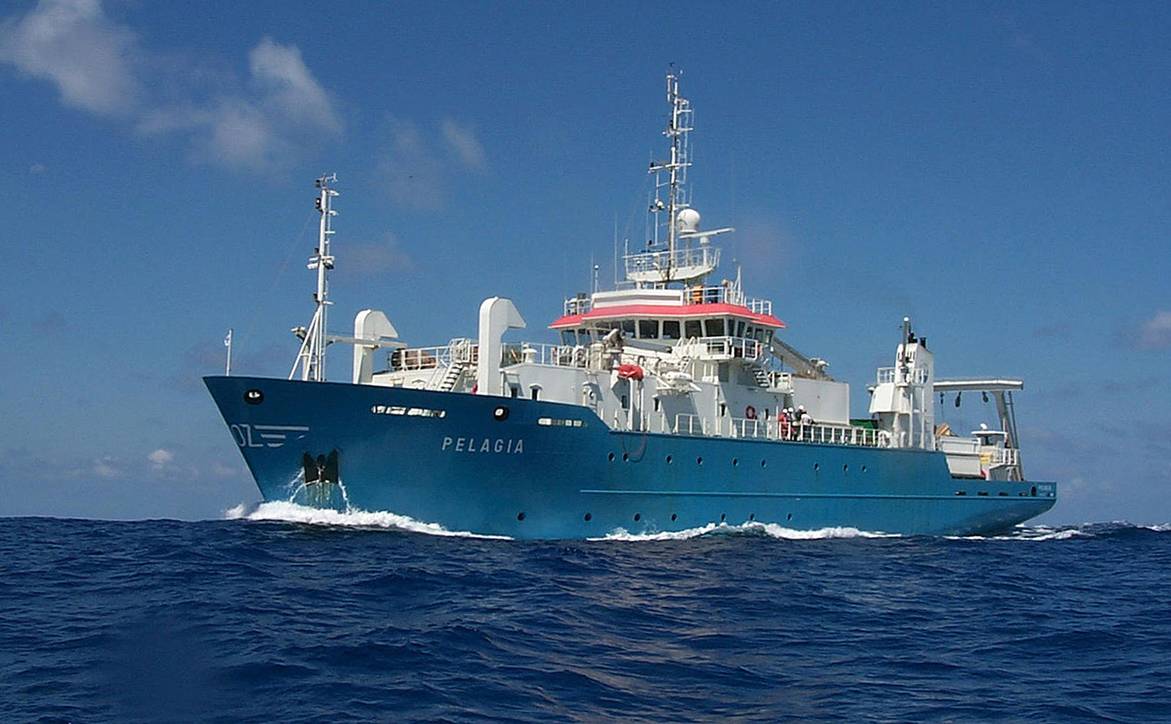PELAGIA 64PE350
- Area:
- Red Sea
- Time:
-
08.03.2012 - 05.04.2012
- Institution:
- GEOMAR
- Chief scientist:
- Mark Schmidt
This multi-disciplinary research cruise will be conducted in the tectonically active area of the Red Sea. Geologists, oceanographers, and (micro)biologists will work onboard the Dutch research vessel PELAGIA. The joint research cruise of GEOMAR and the Faculty of Marine Sciences, KAU, Saudi Arabia is performed within the framework of the “Jeddah Transect” Project.
Geochemical investigations will be performed at hydrothermally active areas in the central Red Sea (i.e. dissolved hydrocarbons in water and brine will be determined along a transect from Jeddah to the Atlantis II Deep). Further (brine-filled) Red Sea Deeps will be investigated along the central graben axis from ~18° - 22°N. Geochemical characteristics will help to identify sources and sinks of hydrocarbons relative to hydrothermal activity (HCs inflow, degassing, thermal/bacterial/catalytic degradation). Spatial variations of gas concentrations and isotope signatures will give insights into subsurface hydrocarbon distribution/formation. Microbial investigations will be performed to identify possible hydrocarbon degrading bacteria.
Hydrocarbon seepage will be investigated by hydroacoustic and (geo)physical methods. Gas/fluid seeps can be located with water column imaging and seafloor multibeam systems. Moreover, reflexion seismic data acquisition will be used to indicate possible fluid migration pathways and subsurface shallow gas. The variable heat and fluid flow i.e. in brine and pockmarks, is expected to be reflected by variable gas (plume) chemistry and hydrocarbon composition in surface sediment.
Focused sampling of gas/fluid and sediment at the seafloor will be performed during Leg a by using an Ocean Modules V8 Offshore ROV. The ROV is owned by the Tjärnö Centre for Underwater Documentation, Sweden. The GEOMAR-owned submersible JAGO is operated during Leg b at shallower water depths. Additionally, a video-guided Multi-Corer (MUC) and a Video CTD/Water Sampler Rosette are used to sample fluid, gas, sediment, and pore water from the seafloor.
Moreover, we wish to advance our understanding of the relationship between hydrothermal activity, volcanism and tectonics in the central Red Sea by geochemical investigation of volcanic rocks. The sampling of volcanic rocks and hydrothermal sediment performed by dredging, wax coring and gravity coring is important to combine geochemical information with bathymetric and tectonic data to aid an overall geological interpretation for the buildup of the central Red Sea graben. The area of investigation includes volcanic and hydrothermal active zones of ocean spreading e.g. from the Multi-deep area at about 24°N up to the Red Sea Rift 18°N in the south, including the Atlantis II Deep and associated areas.



